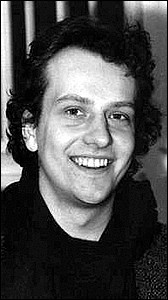about the production
In the recent two years Slovak theatres have staged productions which have undertaken to reconstruct lives of persons who played an important role in the 20th century Slovak history. After dramas about Milan Hodža (The Slovak Chamber Theatre in Martin) and Jozef Tiso (The Aréna Theatre in Bratislava) the latter presented a play also about Gustáv Husák, which signalizes a sympathetic tendency of the management of the theatre to bring touchy and passionately discussed events of the modern Slovak history in an artistic form on the stage. While the personalities of Milan Hodža or Jozef Tiso belong to “the history” and are surrounded by heroic or demonized myths, the personality of Gustáv Husák perhaps has to wait for its mythologization. This man, for twenty years the most powerful politician of the state (the First Secretary of the Communist Party and President of Czechoslovakia 1975 – 1989), has being seen by the majority of the adult population of Slovakia through the prism of own personal experiences. This is why is the depiction in theatre particularly difficult and its creators have to count with different reactions that do not considerate only the question of professional artistic side of the piece – and above all! – its historical relevance. That one, generally, provokes opposing reactions and diametrically different evaluations. Every creator of a literary piece dealing with historical issues always meets the famous Goethe dilemma „Dichtung und Wahrheit“ (Poetry and Truth)... Of course, to set the border between “poetry and truth” is always very difficult, or not possible at all. The sensitivity of depicting a historical theme decreases directly with its approaching to the present time. It may have been caused by the fact that in the 20th century also the Slovak population was hit by the world wars and two cruel totalitarian political regimes which still have had their survivors. They very often consider themselves the only credible witnesses.
... The story begins in the WWII time when Gustáv Husák gradually entered the “high politics”. He belonged to those Slovak communists who were as early as 1941 interned by Minister of Inner Affairs Alexander Mach who immediately after it sent them to “the excursion” to the occupied territory of the Ukraine where the participants of this action were supposed to see the real picture of the material and cultural poverty and underdevelopment in the USSR, what had to cure them from pro-Soviet feelings and communist illusions.
The second part of the play is psychologically deeper and gives an accurate historical and personal picture of “the prisoner of presidents and the president of prisoners”. V. Klimáček, inspired by the political events after 1968, speaks of the tragic logic of the “politics of lesser evil” which always takes its bearers to the mud of collaboration, moral political and personal marasmus. In the modern Slovak history, the cases of Jozef Tiso and Gustáv Husák quite clearly showed that the oppressing power (firstly Hitler´s Germany, later Brežnev´s USSR) does not chooses always open, radical collaborants in its satellite states, but persons who have, in a given period, certain credit and popularity in the society that searches for protection and salvation against a dictating power or an oppressor. Who was the political and personal tragedy at both the mentioned politicians. The play by V. Klimáček is an interesting and positive contribution to so important critical self-reflection of the modern Slovak history.
Ivan Kamenec, a historian, magazine kød no. 1
“The contemporary act of director Čičvák is not a typical Klimáček-like, it is not a theatrical comic, slapstick comedy or political cabaret. It is an attempt to make a serious historical portrait which, in the course of 100 minutes, shows us Husák´s story that, after 15 years after his death, gradually passes into the sphere of myths. ... In the end of the production Emil Horváth created a relatively authentic portrait of a lonely and broken man who is able to admit, even to himself, that he is loosening any role in the history. Anyhow, this dramatic Husák remains only some wax figure in a museum of revolutionary traditions.”
Zuzana Uličianska, Respekt 44, 2006
creators
directed by Martin Čičvák
costumes: Marija Havran
dramaturgist: Martin Kubran
stage design: Tom Ciller
videoprojections: Peter Kerekes, Marek Šulík
characters and cast: Dr. Gustáv Husák: Emil Horváth, Ján Gallovič, Marián Prevendarčík, The Slovak Radio Children Choir led by Adrián Kokoš, accordion – Viliam Majer
director

Martin Čičvák (1975)
The Slovak director, he is mostly working at Czech theatre stages. After graduating in theatre directing from the Janáček Academy of Performing Arts in Brno, he worked as a director in Mahen Drama Ensemble of the National Theatre in Brno (for the staging of Immanuel Kant he was awarded Radok Award as the talent of the year). In the National Theatre in Prague he directed A Good Man from Sezuan by B. Brecht. He has written a few plays. His play The House Where They Do It Well was successfully staged in Brno, Košice, Budapest, Novi Sad and Norwich (directed by A. Cooper), and in the Grace Theater in London (directed by the author, awarded the Critic’s Choice Award; the staging from Košice was presented at Divadelná Nitra ´97). For the staging of Les Bonnes by J. Genet at Dartington College of Arts he was awarded the Critic’s Choice Award at the theatre festival in Edinburgh.
